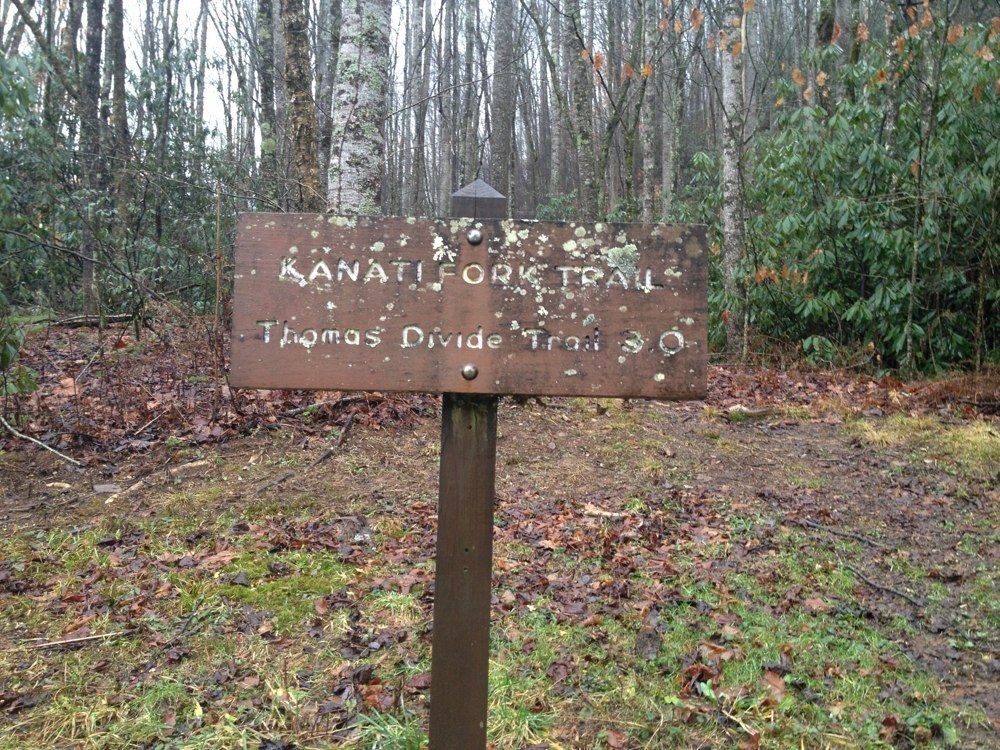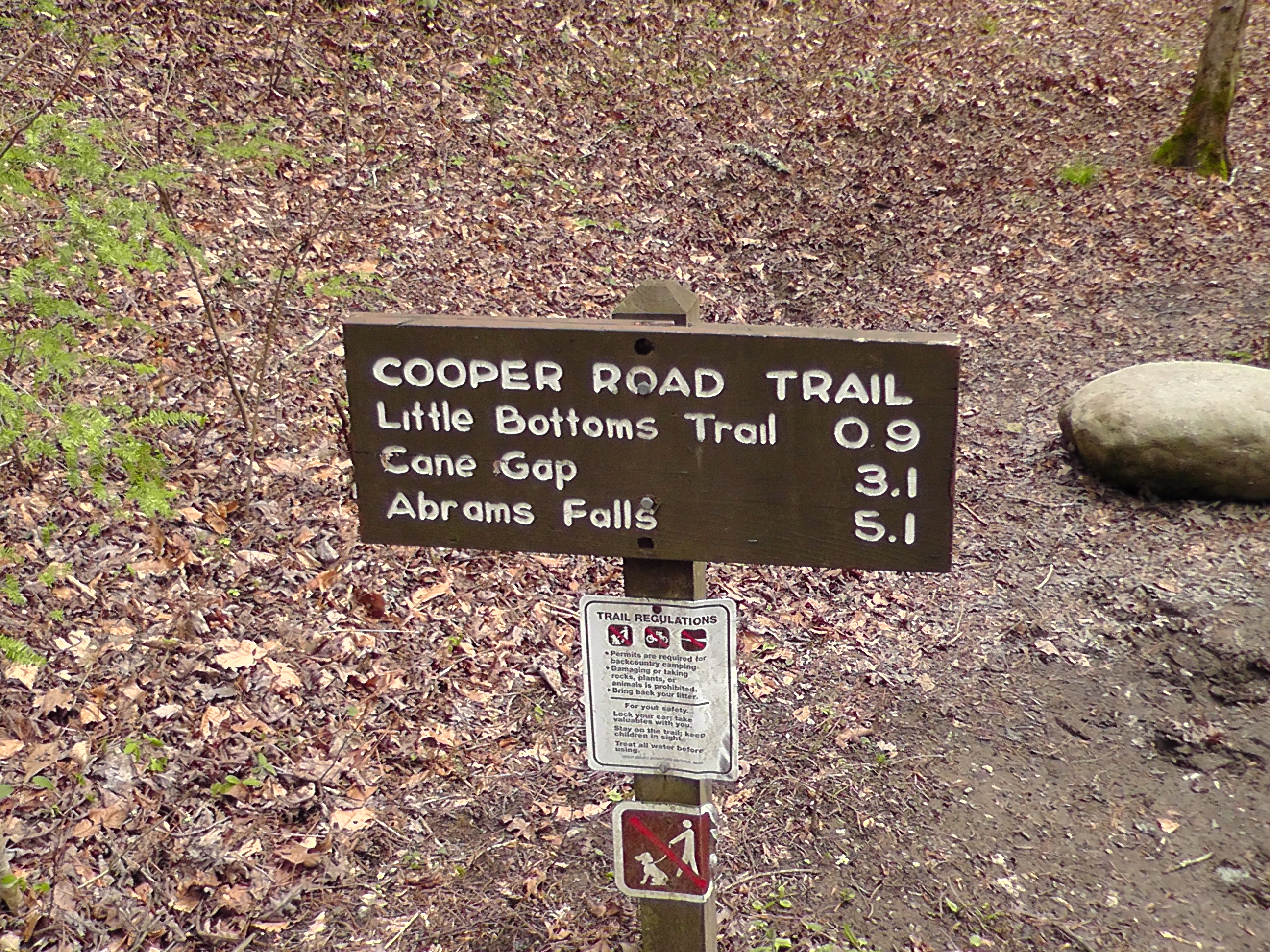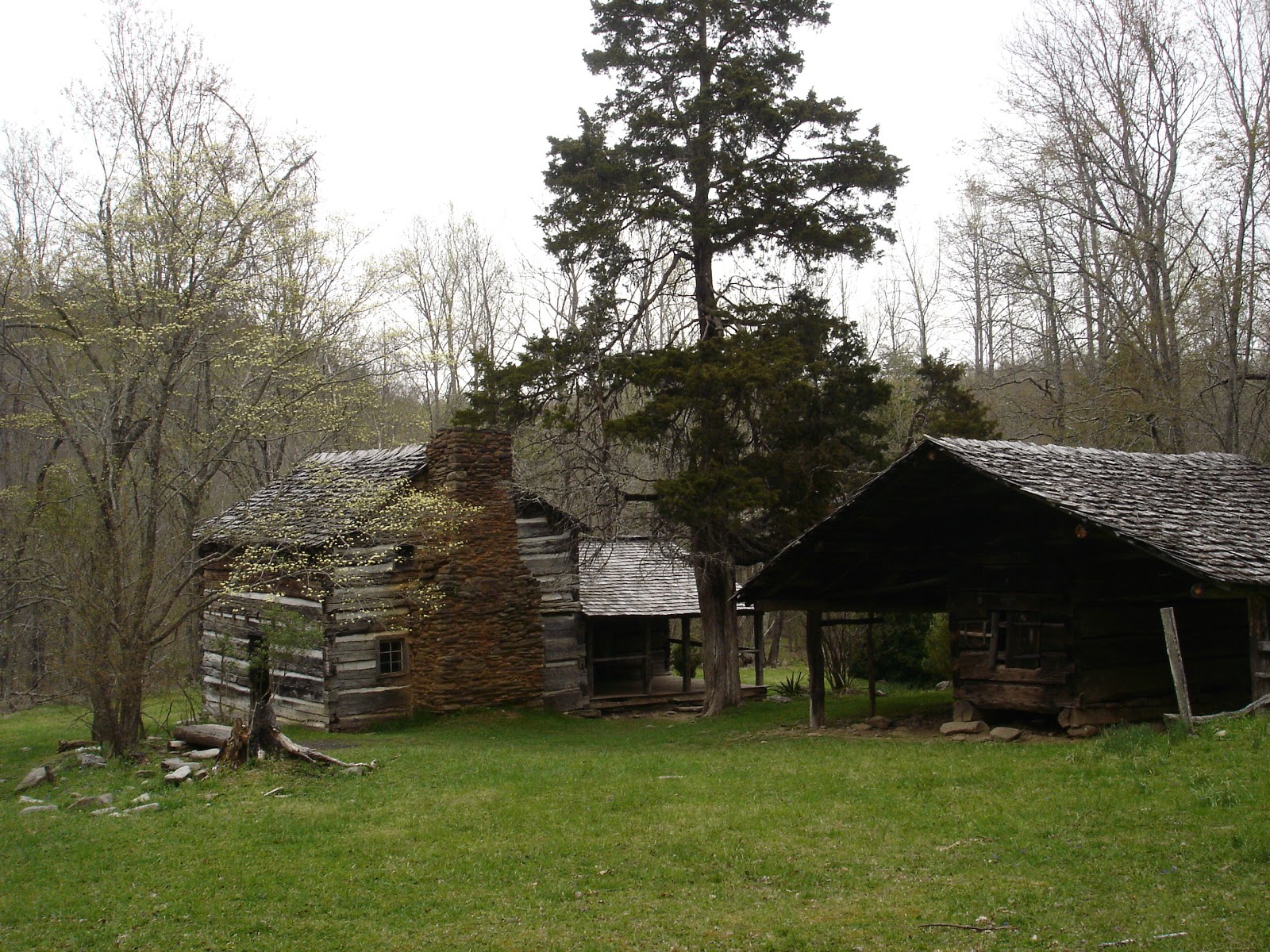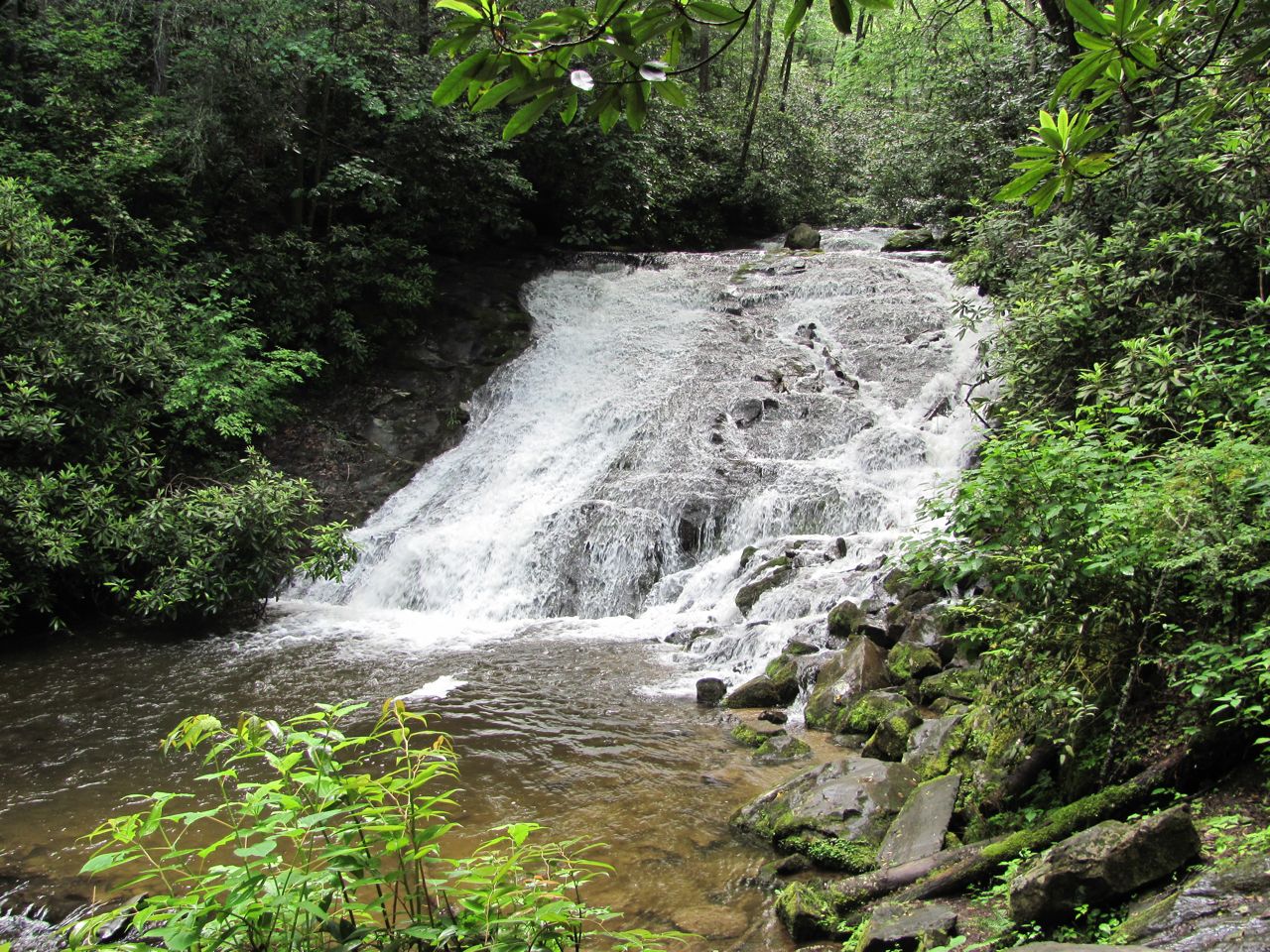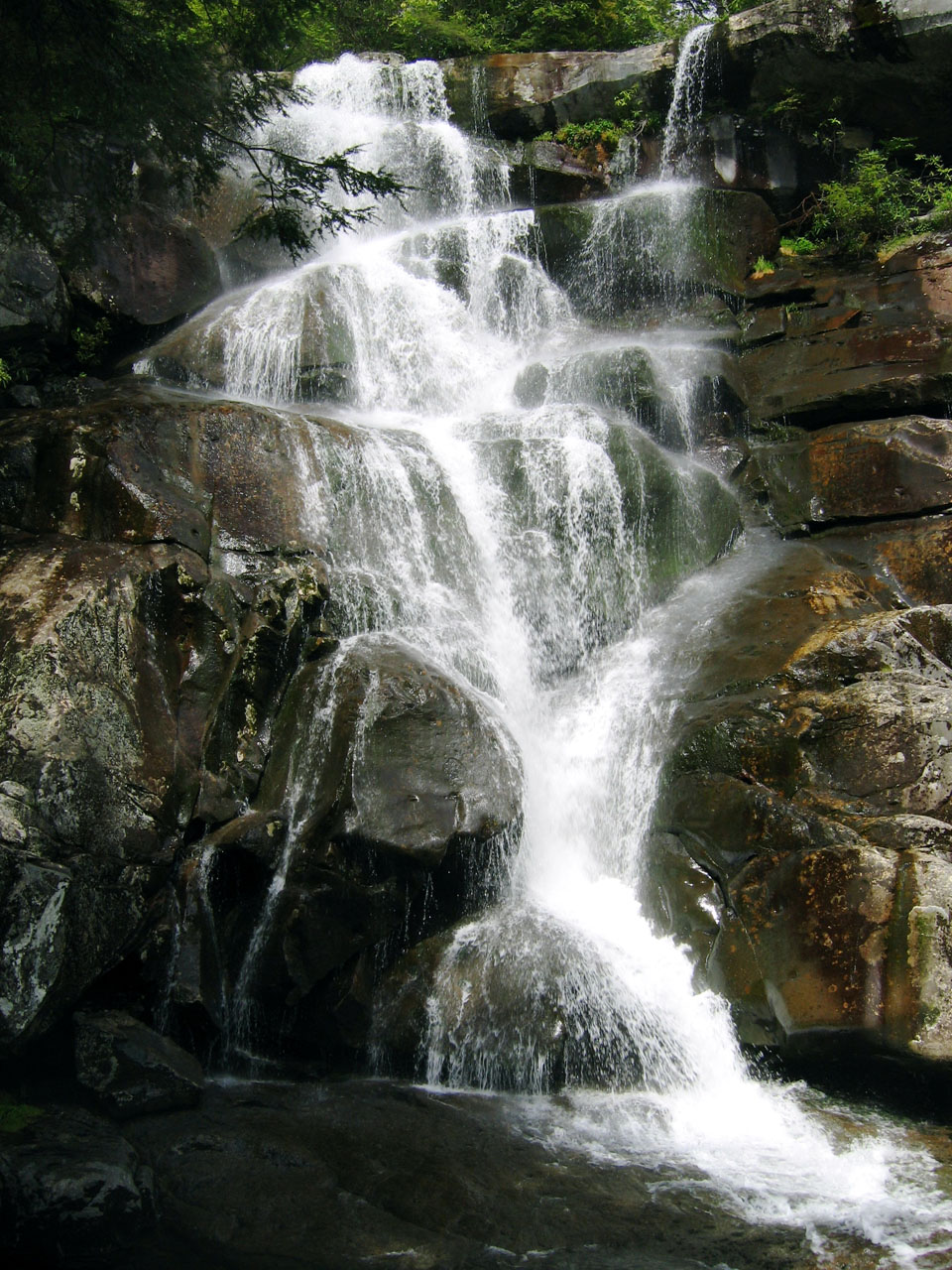 2.0 miles in length
2.0 miles in length- Starting Points – 8.8 miles from Newfound Gap – headed toward North Carolina
- Points of Interest – CCC Camp, Fish Hatchery, Railroad Remains, Kephart Shelter
- Difficulty – 1-2
This is a great trail, especially if you are looking for something a little out of the ordinary but still short enough to hike in one afternoon. Along the way you will get to see some history from the early days of the GSMNP, cross some streams and even take in one of the shelters that you can reserve if you want to stay on the trail overnight. Also, this trail is named for a very famous person: Horace Kephart. Kephart was one of the people that helped with the founding of the Great Smoky Mountains National Park and actually established most of the trails in the park.
 The trail is inclined, gradually gaining altitude as you hike. Within the first few feet, you will cross the Oconaluftee River on a footbridge. The trail starts out very wide, easily allowing 3-4 people to walk side by side. The trail narrows as it continues. Inside the first half mile yo will come upon a chimney that marks the location of an old CCC camp. These members of the Civilian Conservation Corps helped build the infrastructure in the National Park during the 30s and 40s.
The trail is inclined, gradually gaining altitude as you hike. Within the first few feet, you will cross the Oconaluftee River on a footbridge. The trail starts out very wide, easily allowing 3-4 people to walk side by side. The trail narrows as it continues. Inside the first half mile yo will come upon a chimney that marks the location of an old CCC camp. These members of the Civilian Conservation Corps helped build the infrastructure in the National Park during the 30s and 40s.
At 0.7 miles into the trail you will come to the abandon fish hatchery. This hatchery was used by the Works Progress Administration in the 1930s. The WPA helped to establish the National Park. This hatchery helped to establish the rainbow trout population in the Smokies. Though this trout did have adverse effects on the native brook trout, the rainbow trout did establish the Smokies as the trout fishing capital of the south.
 In the last mile of the trail, you will experience 4 stream crossings. If you are unfamiliar with the term stream crossing, you are going to encounter a stream that runs across the trail. The stream crossings vary in depth and width. In most cases, on the trails in the Smokies, there will be some type of bridge to assist you with those crossings. On all of the stream crossings along Kephart Prong Trail you can choose to cross them by wading across the stream or by using the bridges. Now, these bridgesd are nothing like the footbridge that you crossed the Oconaluftee on earlier. These are trees that have been cut in half and laid across the stream. The logs are held in place by stonework and they have handrails in most cases.
In the last mile of the trail, you will experience 4 stream crossings. If you are unfamiliar with the term stream crossing, you are going to encounter a stream that runs across the trail. The stream crossings vary in depth and width. In most cases, on the trails in the Smokies, there will be some type of bridge to assist you with those crossings. On all of the stream crossings along Kephart Prong Trail you can choose to cross them by wading across the stream or by using the bridges. Now, these bridgesd are nothing like the footbridge that you crossed the Oconaluftee on earlier. These are trees that have been cut in half and laid across the stream. The logs are held in place by stonework and they have handrails in most cases.
Along the final 0.2 miles of the trail you will encounter the remains of a narrow gauge railroad from the Champion Fibre Company. Along the side of the trail you will see the iron rails of the railroad covered in most and rusting. This narrow gauge track system transported materials out of the mountains until the establishment of the national park. Not wanting to spend the resources to remove the rails from the park, the iron rails have been left in the mountains to testify to a time long gone.
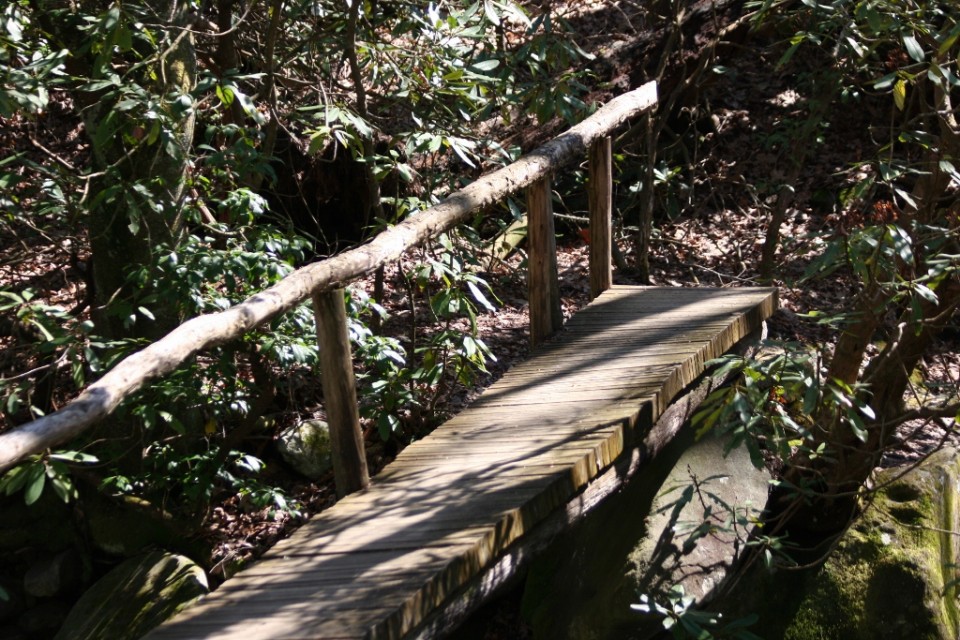
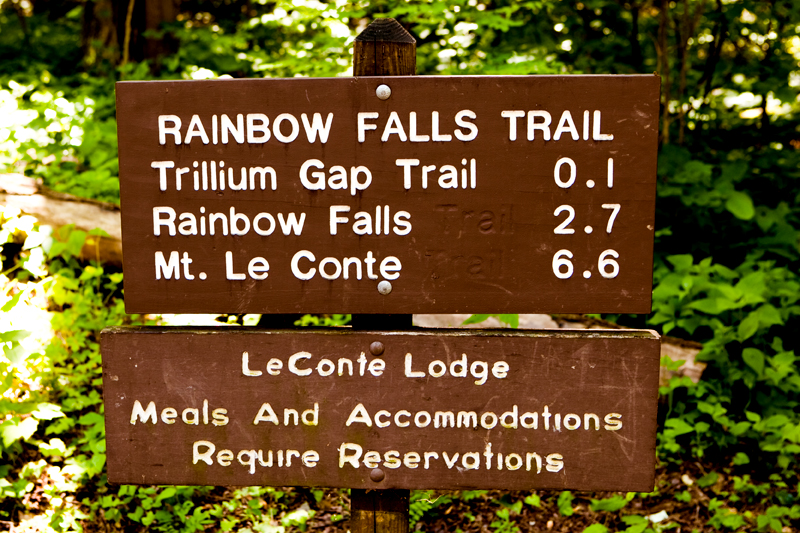
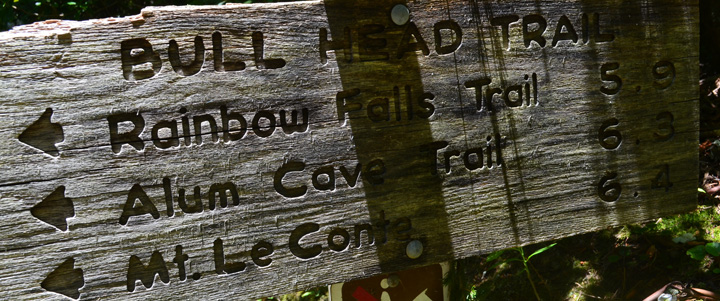
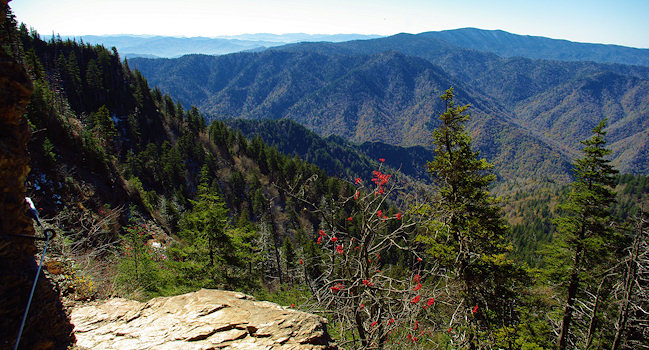
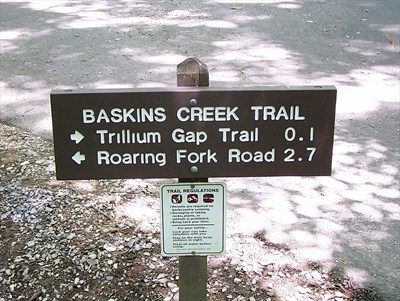
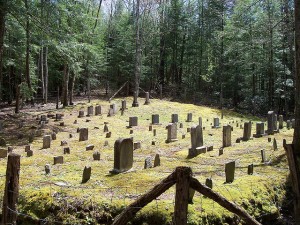 Once on the trail trail, you’ll notice various red maples, oaks, Eastern hemlocks. In winter, you can catch glimpses of Mount LeConte along the trail. You’ll cross Falls Branch at exactly 1 mile into the hike by stepping stones before descending a short ways.
Once on the trail trail, you’ll notice various red maples, oaks, Eastern hemlocks. In winter, you can catch glimpses of Mount LeConte along the trail. You’ll cross Falls Branch at exactly 1 mile into the hike by stepping stones before descending a short ways.